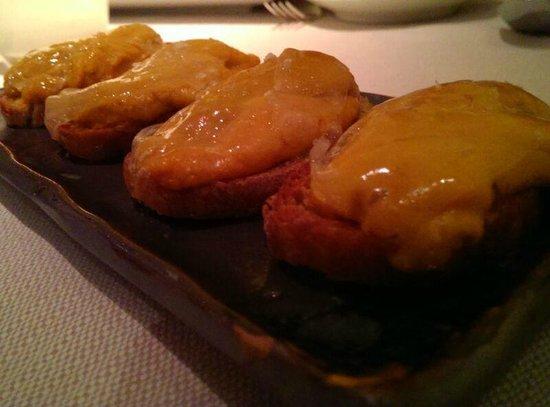On 8/20/2017 at 2:47 PM, weedy said:,the original, at Marea, is pretty melty... not runny like melted butter, but smooth and coated, like a grilled American cheese that's thin enough to see through.
I'm using paper thin slices, and the result is close... but not the smooth even coating he gets.
Mine come out more as if there is a "slice of melted lard on top", rather than completely covered, because of the curling.
these are the original:
Weedy, I was just watching an old episode of "Bizarre Foods with Andrew Zimmern, season 6 episode 15 "NYC; Will work for Food" ". Andrew is going to locations around the city and doing brief stints in NYC kitchens, one of which is Marea. This part of the episode is approximately 12 minutes in (taking into account commercials), They do the Sea Urchin and Lardo Costini. Onto the toast , the urchin is placed, the lardo is a fairly large piece, big enough the it is folded in 1/2 and then placed on top and put into a broiler (salamander?) as he says, " for no more than 15 seconds". The lardo is of course melted, but still showing a bit of opaqueness, not quite as transparent as yours seems to be. Sorry if this is no help, but maybe see if you can find this particular episode.
On 8/19/2017 at 11:02 AM, weedy said:I'll try the jaccarding approach. That's interesting. Thanks.
A broiler or the searzall are relatively dispersed and consistent overhead heat sources but aren't much better in effect.
I suspect Michael White uses a salamander (which I don't have) but I don't know.
The prob with a microwave is that I don't want to cook the raw Uni underneath the Lardo, which would be inevitably cooking faster than the lardo is melting in that method.
You are correct about the salamander.
Just looked, type in the title just as I listed into You Tube, the episode is there.. I just can't make a link, sorry.



